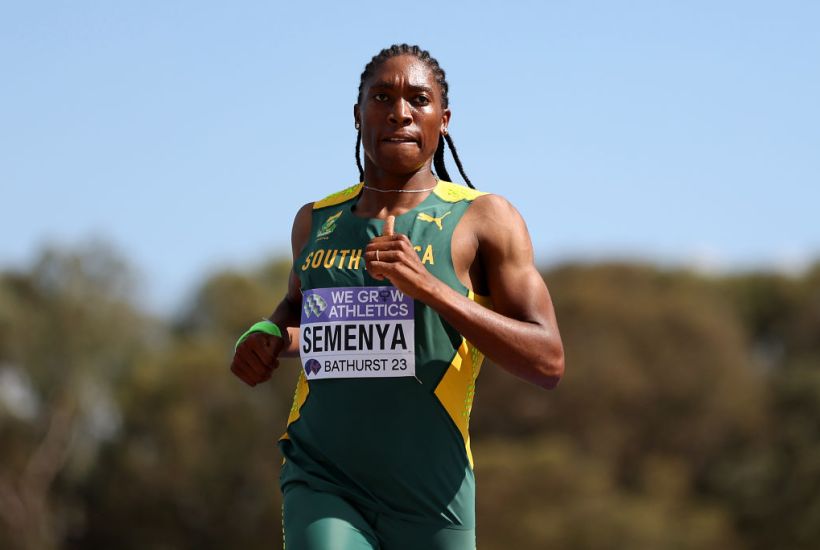Who can compete in women’s sports? This week’s decision by the European Court of Human Rights further complicates the debate. Judges in Strasbourg upheld Caster Semenya’s appeal against World Athletics regulations that requited athletes like Semenya to lower their testosterone levels to be allowed to compete with women. The court ruled that those regulations were ‘a source of discrimination’ for Semenya ‘by the manner in which they were exercised and by their effects’, and the regulations were ‘incompatible with the European Convention on Human Rights’.
Let’s be clear, while sports’ governing bodies operate the most stringent of anti-doping measures, it was a bizarre decision to impose a compulsory doping regime on Caster Semenya and other athletes with certain intersex conditions. The drugs used to lower blood testosterone levels are powerful and life changing. Nobody – in my view – should be required to take drugs to run in a race.
That does not mean that I think Caster Semenya should be eligible for women’s sports. The issue is not some arbitrary level of blood testosterone, but the intersex condition that Semenya was born with. Semenya is reported to have a specific condition known as 5-alpha-reductase deficiency (46 XY 5-ARD).
Despite the best efforts of the LGBTQIA+ lobby to drag intersex people under their ever-expanding umbrella, this decision has nothing to do with transgender people like me. Our sexual development is typical for our sex, and – for the avoidance of doubt – my sex is male. We male transsexuals have no business whatsoever competing in sport reserved for the other sex. There should be no ifs, no buts and no arguments to the contrary on that point.
Intersex conditions – better described perhaps as differences of sexual development – are a totally different issue. There are several dozen different conditions, and they relate to biology rather than psychology. Despite the impression perhaps given by the word intersex, people with differences in their sexual development are still male or female. Nobody is between the sexes, nor outside them in some way.
Sports bodies should not be in the business of deciding who is legally male or female nor determining the social status of athletes. But they do need to decide who is eligible to enter female competitions, and they have a responsibility for making decisions open and fair. Crucially, those decisions need to apply to the specific intersex condition rather than individual athletes. Some decisions hardly need making. Men with Klinefelter syndrome (47, XXY) have an extra X chromosome; they compete with other men. Meanwhile, women with Turner syndrome have a single sex chromosome and compete with other women.
46 XY 5-ARD, which Semenya has, however, warrants greater consideration. People born with the condition have the same chromosomes as men and their testes (not ovaries) produce testosterone. But they have an enzyme deficiency that inhibits the conversion of testosterone to the more powerful dihydrotestosterone. To avoid a lengthy discussion on endocrinology, let’s just say that they can be born with external genitalia that would lead to the midwife announcing, ‘it’s a girl’.
But that does not mean that people with this condition should be allowed to compete in female sport. They are genetically male, and their naturally occurring testosterone – throughout their lives, and not just in an arbitrary period of time before competition – means that they develop and retain male advantage. Two generations ago, their inclusion in female sport may not have mattered on the global scale. The condition is rare and those living with it might have had more to contend with than engaging in competitive sport.
But for better or for worse, sport is now big business. If youngsters with 46 XY 5-ARD have an advantage over genetic females – and the evidence suggests they do – then sports coaches are going to be on the lookout for them. To protect them, and indeed the integrity of women’s sports, the rules need to be unequivocal – people with 46 XY 5-ARD should be ineligible for female competition. That includes Caster Semenya.
That said, sport should be for all and nobody should be excluded. For that reason, we should applaud calls made by UK Athletics and others to develop an ‘open category’ in which anyone can compete, whatever their natural level of testosterone.
Got something to add? Join the discussion and comment below.
Get 10 issues for just $10
Subscribe to The Spectator Australia today for the next 10 magazine issues, plus full online access, for just $10.




















Comments
Don't miss out
Join the conversation with other Spectator Australia readers. Subscribe to leave a comment.
SUBSCRIBEAlready a subscriber? Log in